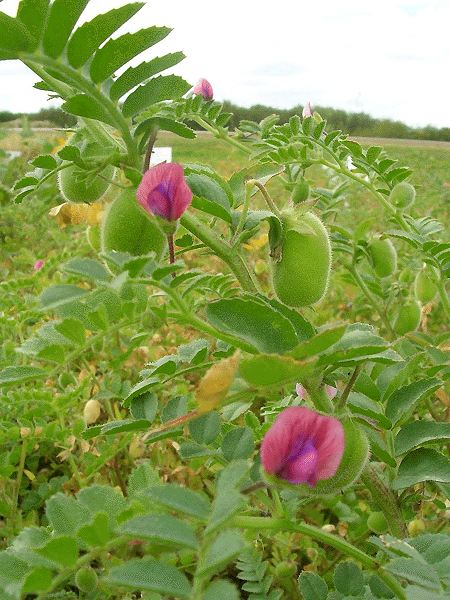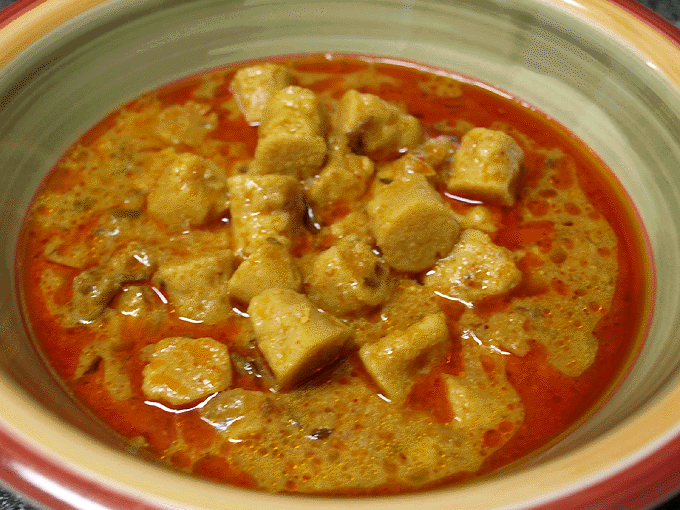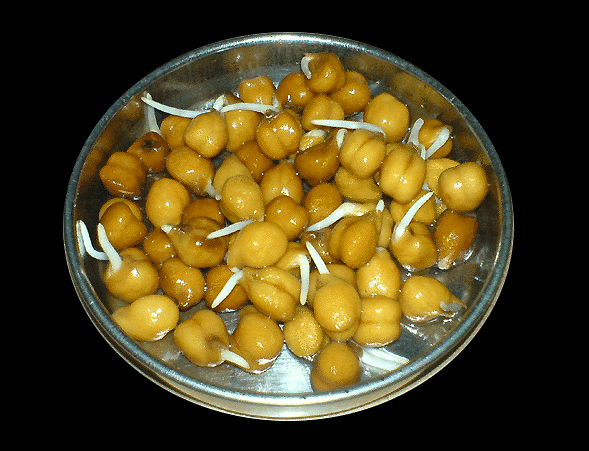
|
|
|
|
BY: SUN STAFF

Sep 21, 2010 — CANADA (SUN) — A journey through India: border to border, bhoga to prasadam. Today our Prasadam series takes up the banner of Bengal Gram, more commonly known as the Chickpea. These nutty, round beans are packed with flavor, nutrition, and possibility. They're adaptable in so many types of preps, from sabjis to sauces, breads, savouries and snacks. Besan, or chickpea flour, is an absolute staple in the devotee's pantry.
Srila Prabhupada recommended chickpeas as a breakfast item, soaked overnight and eaten raw along with fruit, ginger, hot milk or yoghurt, or farina with nuts and raisins. He referred to chickpeas in two different room conversations in Paris, August 3, 1976, in the first, approving of them as a breakfast foodstuff: Prabhupada: What are the general program for eating?

Srila Prabhupada's appreciative for chickpeas was also evident in a second room conversation with the Paris devotees: Bhagavan: They're growing chick peas. They're not ripe yet. Chickpeas go by many names in India. Commonly called Bengali gram, in Hindi they are chana, in Bengal and Punjab they're called chola. Oriyans call them boot, they're kadalai in Tamil, harbara in Maharashtran, and sanagalu in Telugu. In the west, we often hear them call garbanzo beans, a name originating in Mexico.

Chickpea (Cicer arietinum) The chickpea plant (Cicer arietinum) produces two main varieties of beans: white and black. The black chickpeas, which are actually reddish in color, are kala channa; the white are kabuli channa. Both have an excellent nutty flavor. The black channa have a more wrinkled surface, because they're more fiberous, which also makes them a little harder to digest than the white. Besan, or chickpea flour, is only made from the black chickpeas, because he has more body. There are a few other basic chickpea products to keep in mind: fresh green chickpeas are called hara channa; kala channa that's roasted is bhuna channa, and besan (chickpea flour) made from roasted kala channa is known as sattu. Chickpeas are known to have been cultivated at least 7,500 years ago. Today, kala channa is primarily grown in India, while kabuli channa is grown many other places. The white chickpeas weren't grown in India until the 18th century. India now leads the world in chickpea production, followed by Pakistan and Turkey. Most of India's chickpeas are grown in the upper Ganges basins, Uttar Pradesh, Bihar, the Punjab, Madhya Pradesh, Maharashtra, and Rajasthan, and they're often a winter crop. While chickpeas are not so commonly grown in South India, they're certainly enjoyed there as a foodstuff, often served alone or with popped rice as a snack. There are a host of preparations featuring chickpeas that are unique to South Indian cuisine. Chickpeas can be eaten many ways: soaked and eaten raw, boiled or stewed, pan fried, or roasted. They can be prepared whole or split, cooked then pureed to a paste, dry roasted and ground to a powder, or milled to a fine flour. Sprouted chickpeas are a very healthy foodstuff. They'll sprout, like most legumes, within a few days in a sprout jar or placed on a damp cloth on the windowsill. Once sprouted, they can be used in salads, mixed into raita, eaten raw, or mashed and baked into breads. Green chickpeas, which we'll cover in more detail later, can be eaten fresh from the pod, like peas or beans. The leaves of the chickpea plant are also cooked as a green leafy vegetable, known as channa saag. When cooking with dried chickpeas, it's best to soak them for 12 to 24 hours before hand, which considerably shortens cooking time, to half an hour or so. If you begin with the dried chickpea, it will take a good hour or two to cook them, and they must be closely watched, as they'll fall apart quickly when over-cooked. You can also pressure cook the dried chickpeas in water, then add to your sabji, etc. Our first recipe is a Rajasthani specialty, Gatte ki sabji, which features spicy chickpea flour dumplings that are steamed, then cooked in a yoghurt-based curry.

Gatte ki sabji

Sprouted Chickpeas
| |